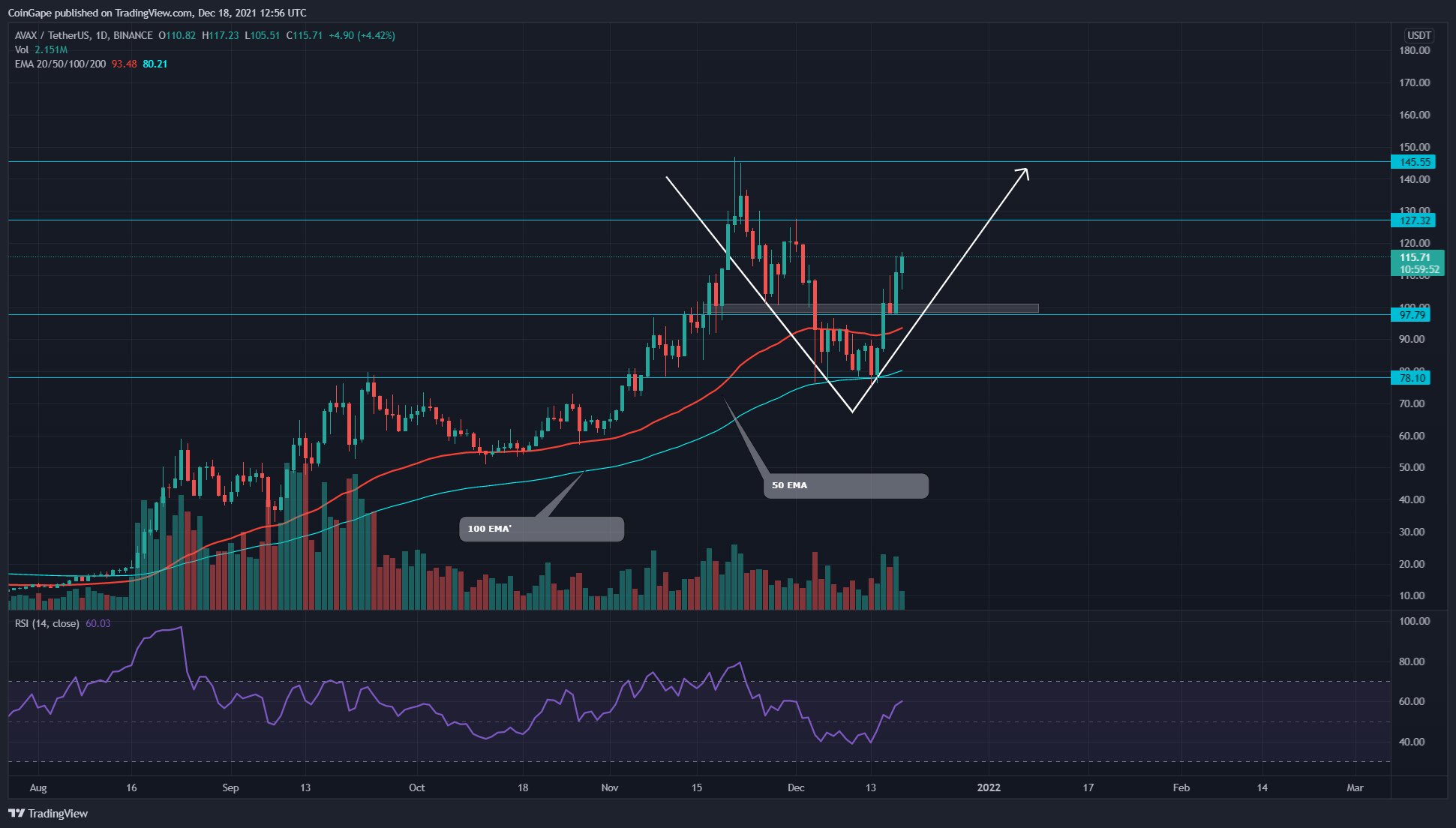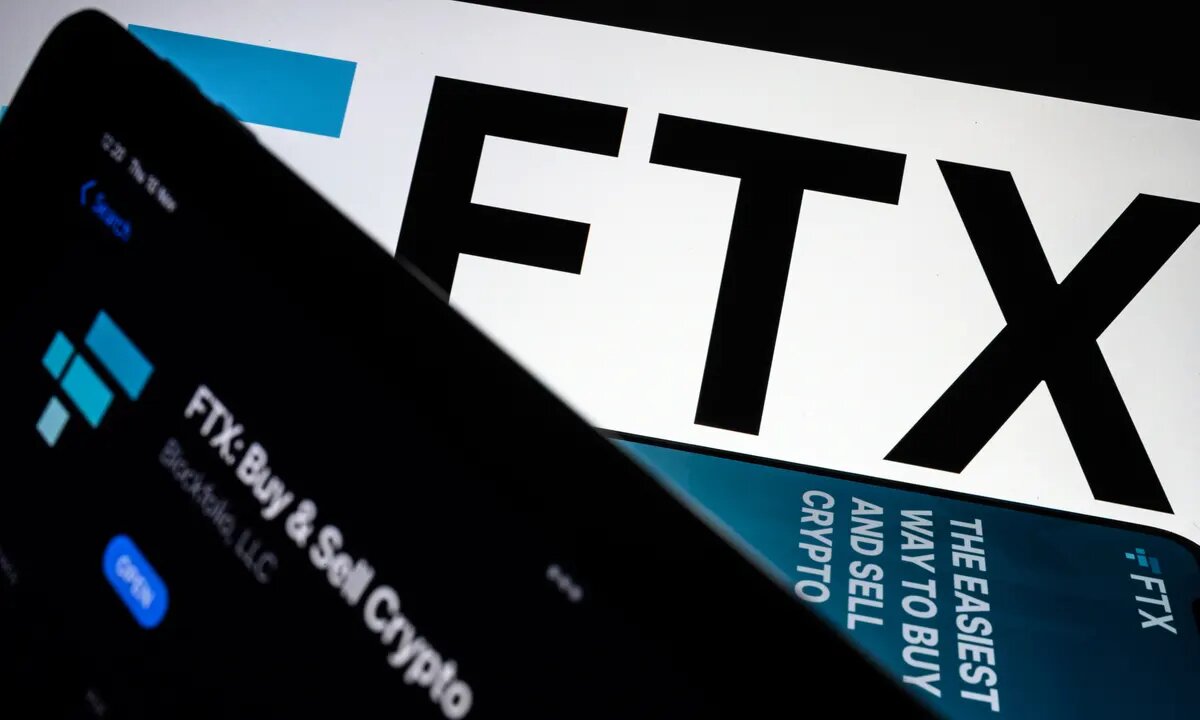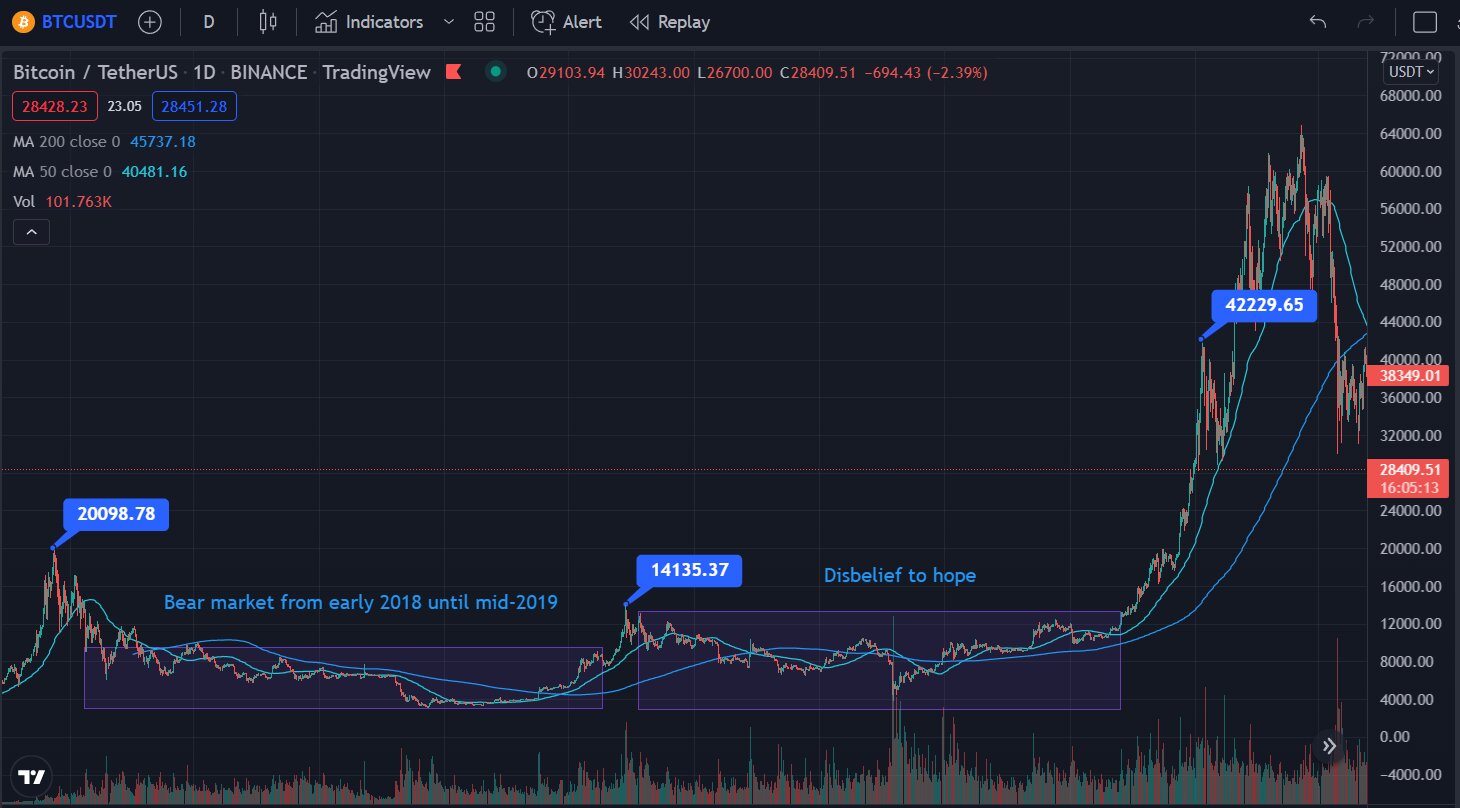Introduction
Welcome to the exciting world of cryptocurrency futures trading! As the popularity of cryptocurrencies continues to rise, so does the demand for innovative trading instruments. Crypto futures have emerged as an attractive option for traders looking to capitalize on the volatility and potential gains of digital assets.
Crypto futures are derivative contracts that allow traders to speculate on the future price of a cryptocurrency without actually owning the underlying asset. These contracts enable traders to go long or short on the price of a cryptocurrency, giving them the opportunity to profit from both rising and falling markets.
Unlike spot trading, where traders buy or sell cryptocurrencies for immediate delivery, futures trading involves entering into a contract to buy or sell a specified amount of cryptocurrency at a predetermined price and date in the future. This creates possibilities for hedging against price fluctuations and leveraging positions to amplify potential profits.
One of the key benefits of crypto futures trading is the ability to trade on margin. Margin trading allows traders to control a larger position with a relatively smaller amount of capital. By borrowing funds from the exchange or other traders, traders can increase their exposure to the market and potentially magnify returns.
However, with the potential for higher returns comes increased risk. Crypto futures trading is a complex and volatile endeavor that requires a deep understanding of the market and careful risk management. It is crucial to educate yourself on the intricacies of this trading strategy and develop a well-defined trading plan before diving into the world of crypto futures.
In this article, we will explore how crypto futures work, discuss the benefits and risks of trading these instruments, highlight popular crypto futures exchanges, and provide strategies and tips for successful trading. Whether you are a seasoned trader looking to diversify your portfolio or a beginner eager to explore the world of cryptocurrency trading, this guide will equip you with the knowledge and tools to navigate the exciting world of crypto futures.
Definition of Crypto Futures
Crypto futures are financial contracts that enable traders to speculate on the future price movements of cryptocurrencies without actually owning the underlying assets. These futures contracts are standardized agreements to buy or sell a specified amount of cryptocurrency at a predetermined price and date in the future.
Unlike spot trading, where traders purchase or sell cryptocurrencies for immediate delivery, futures trading involves entering into a contract that settles at a later date. This delay allows traders to take advantage of potential price fluctuations and profit from both bullish and bearish market conditions.
Traders can take two positions in crypto futures trading: long and short. Going long means buying a futures contract in anticipation of a price increase, while going short involves selling a futures contract with the expectation of a price decrease. Both positions have the potential for profits, depending on the accuracy of the trader’s market prediction.
One of the key features of crypto futures is leverage. Leverage allows traders to control a larger position with a smaller amount of capital. For example, with 10x leverage, a trader can control a $10,000 position with just $1,000. While leverage can amplify potential profits, it also amplifies potential losses, making risk management crucial in futures trading.
Crypto futures are traded on specialized platforms called futures exchanges. These exchanges act as intermediaries, facilitating the trading, settlement, and clearing of futures contracts. Some popular crypto futures exchanges include BitMEX, Binance Futures, and Bybit.
It is important to note that crypto futures are regulated financial instruments, subject to the rules and regulations of the jurisdictions in which they operate. Traders should ensure they are trading on reputable exchanges that adhere to proper security protocols and comply with relevant regulatory requirements.
Overall, crypto futures provide traders with the opportunity to profit from the price movements of cryptocurrencies without owning the underlying assets. They offer flexibility, leverage, and the potential for substantial returns. However, it is essential to understand the risks involved and to approach futures trading with a well-defined strategy and risk management plan.
How Crypto Futures Work
Crypto futures operate on the principle of buying or selling a specified amount of cryptocurrency at a predetermined price and date in the future. Let’s explore the key components and mechanics of how crypto futures work:
Contract Specifications
Each crypto futures contract has specific parameters, including the underlying cryptocurrency, contract size, expiration date, and price. For example, a Bitcoin futures contract might have a contract size of one Bitcoin and a expiration date set for a month in the future.
Long and Short Positions
Traders can take either a long or short position in a crypto futures contract. Going long involves buying a contract, anticipating that the price of the underlying cryptocurrency will rise. Going short means selling a contract with the expectation of a price decline. Both positions allow traders to profit from market movements, regardless of whether the market is trending up or down.
Margin Trading and Leverage
Crypto futures trading often involves margin trading, where traders can leverage their positions. Leverage allows traders to control a larger position with a smaller amount of capital. For example, with 10x leverage, a trader only needs to put up 10% of the contract’s value as margin. However, it’s essential to note that leverage increases both potential profits and losses.
Marking to Market
Throughout the life of a futures contract, its value changes with fluctuations in the underlying cryptocurrency’s price. To account for these changes, futures contracts are marked to market daily. Profits or losses are realized and added or deducted from traders’ accounts accordingly.
Settlement
When a futures contract reaches its expiration date, it is settled. Settlement can occur physically, where the underlying cryptocurrency is delivered to the buyer, or in cash, where the difference between the contract price and the market price is settled in the trader’s account. Cash settlement is more common, as it eliminates the need for physical delivery.
It’s important to choose a reputable futures exchange to trade crypto futures. These exchanges provide the platform for trading, matching buyers and sellers, and handle the settlement and clearing process. Examples of popular crypto futures exchanges include BitMEX, Binance Futures, and Bybit.
By understanding how crypto futures contracts work, traders can effectively navigate the futures market, employ appropriate trading strategies, and manage risk. It’s crucial to stay informed about contract specifications, monitor market trends, and continuously adjust trading positions to align with market conditions.
Benefits of Crypto Futures Trading
Crypto futures trading offers several advantages for traders who are looking to participate in the cryptocurrency market. Let’s explore some of the key benefits:
1. Speculate on Price Movements
Crypto futures allow traders to speculate on the future price movements of cryptocurrencies without owning the underlying assets. This provides an opportunity to profit from both bullish and bearish market conditions. Whether the market is rising or falling, traders can take long or short positions to maximize their potential returns.
2. Increased Liquidity
Crypto futures contracts are traded on specialized exchanges that provide high liquidity. This means that traders can easily enter and exit positions without worrying about not finding a counterparty to trade with. The liquidity of futures markets ensures that traders can execute their trades efficiently and at competitive prices.
3. Leverage and Margin Trading
Crypto futures trading often involves leveraging positions. With leverage, traders can control a larger position with a relatively smaller amount of capital. This allows for potential amplified returns. However, it’s crucial to note that leverage also magnifies potential losses, so proper risk management is essential.
4. Hedging and Risk Management
Crypto futures provide traders with the ability to hedge their positions. By taking opposite positions in futures contracts, traders can offset potential losses in their spot market holdings. This helps mitigate the impact of adverse price movements and manage overall portfolio risk.
5. Access to Diverse Cryptocurrencies
Crypto futures exchanges offer a wide range of cryptocurrencies to trade. This provides traders with exposure to various digital assets and allows them to diversify their trading strategies. Whether it’s Bitcoin, Ethereum, or other alternative cryptocurrencies, traders can choose the assets that align with their trading goals and market outlook.
6. Opportunity for Profit in Volatile Markets
The cryptocurrency market is known for its volatility, which can present both opportunities and risks. In such an environment, crypto futures trading can be particularly appealing. The ability to profit from price fluctuations, regardless of market direction, can be attractive to traders looking to capitalize on market volatility.
Overall, crypto futures trading offers flexibility, liquidity, and the potential for substantial returns. It provides traders with the ability to speculate on price movements, employ leverage, manage risk, and access a diverse range of cryptocurrencies. However, it’s important to remember that futures trading carries inherent risks, and proper risk management and understanding of the market are essential for successful trading.
Risks of Crypto Futures Trading
While crypto futures trading offers the potential for lucrative returns, it’s important to be aware of the risks involved. Understanding and managing these risks is crucial for successful trading. Here are some of the key risks to consider when engaging in crypto futures trading:
1. Volatility
The cryptocurrency market is known for its high volatility. Prices can experience significant fluctuations within short periods, increasing the potential for both profits and losses. While volatility can present opportunities, it also magnifies the risks associated with futures trading. Traders must be prepared for sharp price movements and have strategies in place to manage risk accordingly.
2. Leverage and Margin Calls
Leveraging positions in crypto futures trading allows traders to control larger positions with smaller amounts of capital. While this can amplify potential profits, it also increases the risk of substantial losses. If market movements go against a trader’s position, they may face margin calls, requiring additional capital to maintain their positions. Failing to meet margin requirements can lead to forced liquidation of positions, resulting in significant losses.
3. Counterparty Risk
Crypto futures trading involves entering into contracts with counterparties, typically through exchanges. There is always a risk of the exchange facing technical issues, hacks, or insolvency. Traders should choose reputable and well-established exchanges with robust security measures and transparent trading practices to minimize counterparty risk. Conducting thorough research and due diligence before trading on any platform is essential.
4. Regulatory and Legal Risks
The regulatory landscape for cryptocurrencies and futures trading is rapidly evolving. Regulatory authorities across different jurisdictions may impose new rules or restrictions that can impact the trading environment. Changes in regulations can affect trading volumes, liquidity, and even the viability of certain derivatives products. Traders should stay updated on the latest regulatory developments and ensure compliance with local laws and regulations.
5. Market Manipulation
Due to the relatively unregulated nature of the cryptocurrency market, there is a risk of market manipulation. Illiquid markets and lower trading volumes compared to traditional financial markets make cryptocurrencies more susceptible to price manipulation by whales or large players. Traders must be vigilant and exercise caution to avoid falling victim to artificially inflated or manipulated prices.
6. Lack of Fundamental Basis
Traditional financial markets often have well-established fundamental factors that influence asset prices. In the case of cryptocurrencies, determining intrinsic value can be challenging due to the nascent stage of the industry and the speculative nature of digital assets. Traders may face difficulty in analyzing and valuing cryptocurrencies, making it important to rely on technical analysis and market sentiment when making trading decisions.
It’s essential to acknowledge and carefully manage these risks when engaging in crypto futures trading. Traders should employ proper risk management strategies, set realistic expectations, conduct thorough research, and stay informed about market developments. By being aware of the risks and taking proactive measures to mitigate them, traders can navigate the crypto futures market more effectively.
Popular Crypto Futures Exchanges
As the demand for crypto futures trading continues to grow, several exchanges have emerged as industry leaders, providing traders with reliable platforms to engage in futures trading. Here are some of the popular crypto futures exchanges:
1. BitMEX
BitMEX is one of the most renowned crypto futures exchanges, known for its advanced trading features and high liquidity. The exchange offers a wide range of futures contracts, including perpetual contracts with up to 100x leverage. BitMEX has a user-friendly interface, advanced order types, and robust security measures, making it a preferred choice for experienced traders.
2. Binance Futures
Binance, one of the largest cryptocurrency exchanges globally, also offers a futures trading platform called Binance Futures. It provides traders with a diverse array of futures contracts, including perpetual contracts and traditional futures with leverage up to 125x. With a seamless user interface and integration with the main Binance exchange, Binance Futures attracts both retail and institutional traders.
3. Bybit
Bybit is a rapidly growing crypto futures exchange known for its user-friendly interface and competitive fee structure. The exchange offers perpetual contracts with leverage of up to 100x for popular cryptocurrencies such as Bitcoin, Ethereum, and Ripple. Bybit also focuses on security, providing cold storage for user funds and offering features like multi-signature technology and two-factor authentication.
4. FTX
FTX is a cryptocurrency derivatives exchange that offers a wide range of futures products, including leveraged tokens and indices. The platform caters to both retail and institutional traders and has gained popularity for its innovative products and advanced trading features. FTX supports futures trading with leverage of up to 101x and offers a user-friendly interface and robust risk management tools.
5. Deribit
Deribit is a futures and options exchange specialized in cryptocurrency derivatives. It offers a variety of futures contracts and options with up to 100x leverage. Deribit is known for its high liquidity and competitive trading fees. The exchange has a strong focus on security, offering cold storage for user funds and requiring multiple signatures for withdrawals.
These are just a few examples of the popular crypto futures exchanges available in the market. It’s important to conduct thorough research, compare features and fees, and consider factors such as liquidity, security, and user experience before choosing an exchange. Additionally, it’s advisable to start with small trading volumes and gradually increase exposure as you become more comfortable with the platform.
Remember to always exercise caution when trading on any exchange and be mindful of the associated risks. By choosing reputable and well-established exchanges, traders can access a wide range of crypto futures contracts and confidently engage in futures trading.
Strategies for Crypto Futures Trading
Crypto futures trading requires careful planning, analysis, and execution. Having a well-defined trading strategy can greatly increase the chances of success. Here are some strategies commonly used in crypto futures trading:
1. Trend following
Trend following is a popular strategy that involves identifying and trading in the direction of established market trends. Traders using this strategy aim to enter long positions when the market is in an uptrend and short positions when the market is in a downtrend. Technical indicators such as moving averages and trendlines can assist in identifying trend reversals and determining entry and exit points.
2. Breakout trading
Breakout trading involves entering a trade when the price breaks through a significant support or resistance level. This strategy aims to capture potential momentum and take advantage of significant price movements. Traders using this strategy often monitor price patterns, such as triangles or rectangles, and wait for a breakout confirmation before entering a position.
3. Mean reversion
Mean reversion is a strategy based on the assumption that prices tend to revert to their average values after deviating from them. Traders using this strategy will look for overextended price moves and enter positions in the opposite direction, anticipating a reversal. This strategy requires careful monitoring of price and the use of technical indicators to identify potential turning points.
4. Arbitrage
Arbitrage involves taking advantage of price discrepancies between different exchanges or markets. Traders using this strategy simultaneously buy and sell the same asset on different platforms to profit from the price difference. This strategy requires quick execution and a deep understanding of market dynamics and exchange fees to be profitable.
5. Scalping
Scalping is a short-term trading strategy that aims to profit from small price movements. Traders using this strategy enter and exit positions quickly, often within minutes or seconds, capturing small gains multiple times throughout the trading day. Scalpers rely on technical analysis and fast execution to capitalize on short-term market inefficiencies.
6. Risk management
Regardless of the trading strategy employed, effective risk management is crucial in crypto futures trading. Traders should set clear stop-loss orders to limit potential losses and avoid overexposing their capital. Additionally, proper position sizing, using leverage conservatively, and diversifying the portfolio can help mitigate risks.
It’s important to note that no strategy guarantees profits, and traders should continuously adapt their strategies to changing market conditions. Backtesting and analyzing historical data can help refine strategies and improve decision-making. Traders are also encouraged to stay updated with market news, monitor key technical indicators, and maintain discipline in following their trading plans.
Remember, each trader has their own trading style and risk tolerance. It’s essential to choose a strategy that aligns with your goals and suits your individual preferences and expertise. Continuous learning, practice, and maintaining a rational mindset are key to achieving success in the dynamic world of crypto futures trading.
Tips for Successful Crypto Futures Trading
Crypto futures trading can be a challenging endeavor, but with the right approach and mindset, traders can increase their chances of success. Here are some tips to help you navigate the world of crypto futures trading:
1. Educate Yourself
Prioritize education and understanding of the crypto market and futures trading. Stay updated with industry news, learn about different trading strategies and technical analysis techniques, and familiarize yourself with the specific features and risks of futures contracts. The more knowledge you have, the better equipped you’ll be to make informed trading decisions.
2. Develop a Trading Plan
Create a well-defined trading plan that outlines your goals, risk tolerance, and preferred trading strategies. Determine your entry and exit criteria, position sizing, and risk management rules. A trading plan will help guide your decision-making process and keep emotions in check during volatile market conditions.
3. Start with a Demo Account
If you’re new to crypto futures trading or testing out a new strategy, consider using a demo account offered by many exchanges. This allows you to practice trading in a risk-free environment, get familiar with the platform’s features, and fine-tune your strategy before committing real capital.
4. Manage Risk
Effective risk management is crucial in crypto futures trading. Set and adhere to appropriate stop-loss orders to limit potential losses. Determine the maximum percentage of your trading capital that you’re willing to risk on each trade and stick to it. Avoid overleveraging your positions and diversify your portfolio to minimize exposure to any single cryptocurrency.
5. Use Technical Analysis
Utilize technical analysis to identify market trends, support and resistance levels, and potential entry and exit points. Use various indicators and chart patterns to guide your trading decisions. However, remember that technical analysis is not foolproof and should be used in conjunction with other factors and market analysis.
6. Practice Patience and Discipline
Successful trading requires patience and discipline. Avoid making impulsive decisions based on emotions or short-term market fluctuations. Stick to your trading plan and avoid chasing after every market move. Good traders know when to enter a trade and, equally important, when to stay out and wait for better opportunities.
7. Monitor Market News and Events
Stay informed about market news, industry developments, and major events that could impact the crypto market. Stay updated on regulatory changes, technological advancements, and other factors that can influence cryptocurrency prices. Being aware of external factors can help you anticipate market movements and make more informed trading decisions.
8. Learn from Mistakes and Adapt
Trading involves a learning curve, and everyone makes mistakes along the way. Use your trading journey as a learning experience. Analyze your trades, identify areas for improvement, and adapt your approach accordingly. Keep a trading journal to track your performance, strengths, and weaknesses, and use it as a reference to refine your strategy over time.
Crypto futures trading requires continuous learning, practice, and discipline. It’s essential to stay patient, manage risk effectively, and adhere to a well-thought-out trading plan. By combining knowledge with sound decision-making and a rational mindset, you can increase your chances of achieving success in the dynamic world of crypto futures trading.
Conclusion
Crypto futures trading offers an exciting opportunity to participate in the dynamic and volatile cryptocurrency market. By understanding the fundamentals of crypto futures, employing effective trading strategies, and managing risk, traders can potentially capitalize on price movements and achieve success.
It’s important to remember that crypto futures trading carries inherent risks, including volatility, leverage, counterparty risk, and regulatory uncertainties. Therefore, it’s crucial to educate yourself, develop a well-defined trading plan, and stay updated with market news and developments.
Popular crypto futures exchanges such as BitMEX, Binance Futures, Bybit, FTX, and Deribit provide traders with the platforms to execute their trading strategies. It’s essential to choose reputable exchanges with a strong track record in terms of security, liquidity, and transparent trading practices.
Successful crypto futures trading requires a disciplined mindset, proper risk management, and the ability to adapt to changing market conditions. Traders should continuously refine their strategies, learn from mistakes, and stay patient and disciplined throughout their trading journey.
Remember, there is no one-size-fits-all approach to trading, and it’s important to find the strategy that aligns with your goals, risk tolerance, and expertise. Continuous learning, practice, and staying informed about market trends are key to achieving success in the exciting world of crypto futures trading.

























